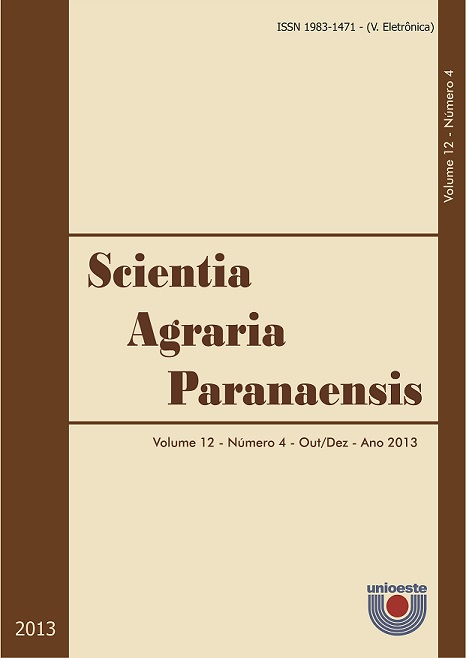Induction embryogenic callus torch ginger in vitro
DOI:
https://doi.org/10.18188/sap.v12i4.5388Keywords:
produção vegetal, agronomiaAbstract
With the purpose of obtaining embryogenic calluses, different auxins and inoculation position of the explants were evaluated. Rhizomes of about 0.5cm obtained from micropropagated seedlings were cut lengthwise at half and inoculated in test tubes. After inoculation, the cultures were kept in growth room at 25±2ºC in the dark. The completely randomized design in a factorial scheme 6x2, represented by five auxins (ANA; AIB; AIA; 2,4-D and picloram) at the concentration of 10µM and a control (without auxin) and two explant positions (H-horizontal and V-vertical). The experiment was constituted of five replicates with three tubes each containing one explant. After 50 days’ cultivation, both the percentage of oxidation and callus formation were evaluated. The data were transformed to √x+0.5 and studied by utilizing the SISVAR program and the means compared by the Skott-Knott test at 5% of probability. In the culture medium added of 1,4-D, all the explants formed calluses. The explants inoculated in the culture medium containing picloram did not differ statistically with relation to the inoculation position of the explants, which presented 87% (V) and 80% (H) of calluses. For the percentage of oxidation, thee were no statistic difference among the treatments, but on those added of 2,4-D, ANA and AIA at the upright position, no oxidation as found. So, the MS medium added of 10µM of 2,4-D and the rhizome inoculated at the upright position were the ones which presented highest percentage (100%) of embryogenic callus induction.Keywords: Etligera elatior, In vitro propagation, Zingiberaceae
Downloads
Published
How to Cite
Issue
Section
License
Aviso de Direito Autoral Creative Commons
Política para Periódicos de Acesso Livre
Autores que publicam nesta revista concordam com os seguintes termos:
1. Autores mantém os direitos autorais e concedem à revista o direito de primeira publicação, com o trabalho simultaneamente licenciado sob a Licença Creative Commons Attribution que permite o compartilhamento do trabalho com reconhecimento da autoria e publicação inicial nesta revista.2. Autores têm autorização para assumir contratos adicionais separadamente, para distribuição não-exclusiva da versão do trabalho publicada nesta revista (ex.: publicar em repositório institucional ou como capítulo de livro), com reconhecimento de autoria e publicação inicial nesta revista.
3. Autores têm permissão e são estimulados a publicar e distribuir seu trabalho online (ex.: em repositórios institucionais ou na sua página pessoal) a qualquer ponto antes ou durante o processo editorial, já que isso pode gerar alterações produtivas, bem como aumentar o impacto e a citação do trabalho publicado (Veja O Efeito do Acesso Livre).
Licença Creative Commons
Esta obra está licenciada com uma Licença Creative Commons Atribuição-NãoComercial-CompartilhaIgual 4.0 Internacional, o que permite compartilhar, copiar, distribuir, exibir, reproduzir, a totalidade ou partes desde que não tenha objetivo comercial e sejam citados os autores e a fonte.


